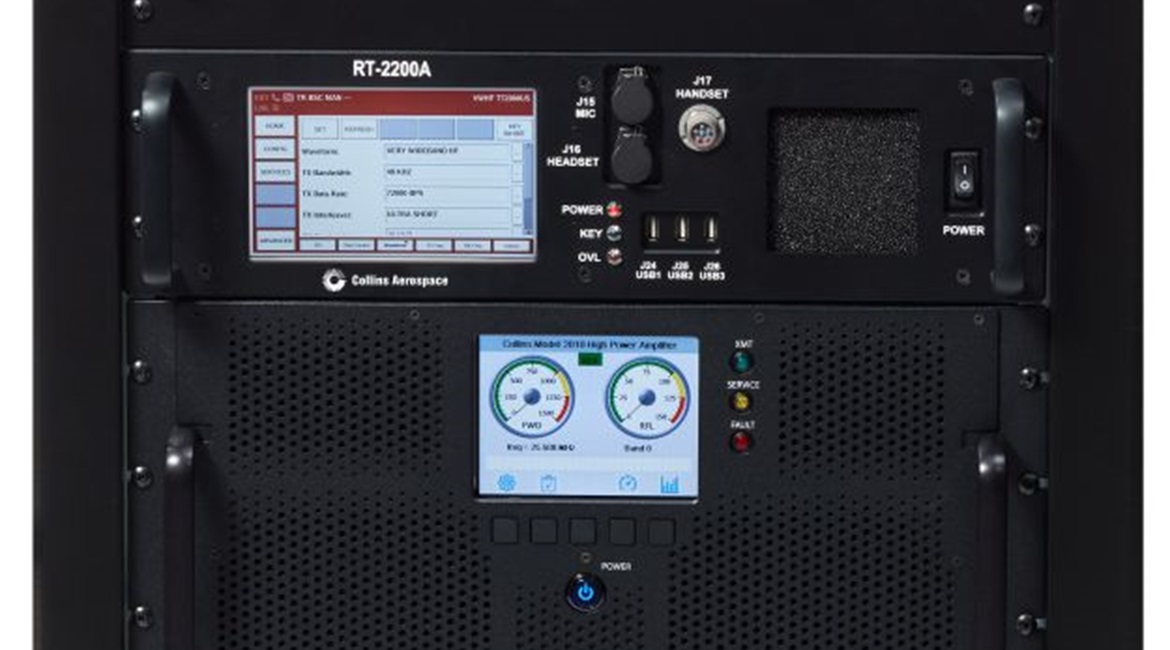
Collins Aerospace at the 2019 Defence and Security Equipment International exhibition (DSEI 2019) has launched its new URG-IV high-frequency (HF) ground station, designed to deliver high capacity communications.
The system achieves data speeds of up to 100 Kbits per second, according to company representative Herve Tilloy, and it can even achieve video at about 15 frames per second.
Although slow relative to UHF standard, this is up to 20 times faster than most HF communications, which have a reputation for being noisy, less reliable, and limited in terms of data. The skywave signal can achieve effectively unlimited ranges by bouncing the signal off the ionosphere.

Collins Aerospace’s new URG-IV HF ground station. (Collins Aerospace)
The URG-IV is built around a RT-22A wideband HF transceiver. This provides the extra capacity in the signal. A fourth-generation automatic link establishment (ALE) searches the electromagnetic spectrum and identifies the optimum frequency for transmissions.
Other radiosets on the same network constantly scan the HF frequency range (3–30 MHz), and when they pick up a signal from the transmitter switch to that frequency, they send a return message to confirm the link. When demonstrated, this took about three to four seconds, and subsequent data messages between two locations 1,700 km apart were nearly instantaneous. Traditionally, HF communications have required a frequency manager estimating the best frequencies to use and a rigid schedule adhered to at all stations on the net.
The system is about 1 cubic metre, meaning it is mainly suited for use at static locations or onboard ships. The URG-IV can switch between numerous wideband antennas.
Company representatives said there has been significant interest from the defence ministries of a number of NATO countries. There are no export constraints on the equipment.
Looking to read the full article?
Gain unlimited access to Janes news and more...






